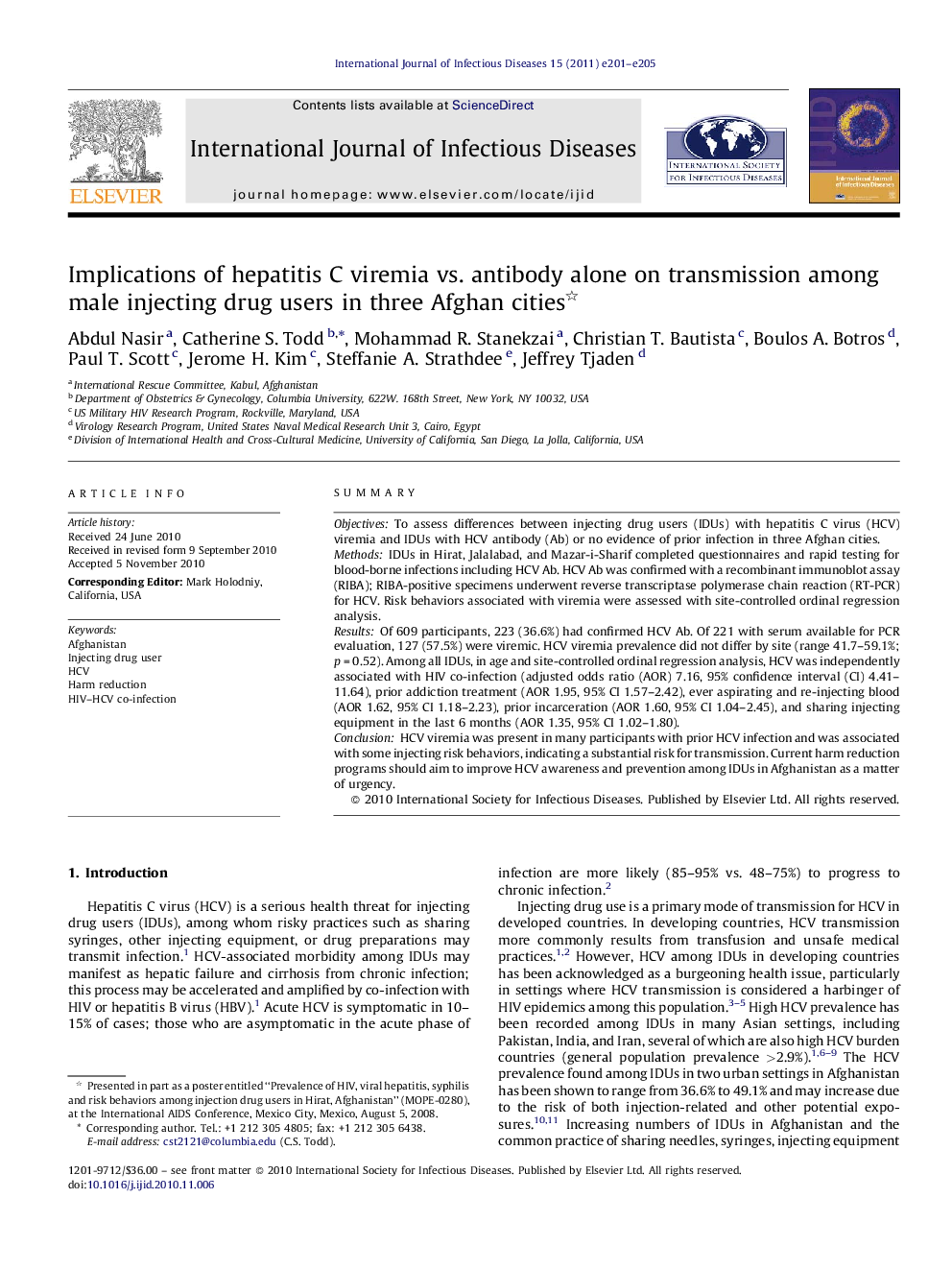| Article ID | Journal | Published Year | Pages | File Type |
|---|---|---|---|---|
| 3363056 | International Journal of Infectious Diseases | 2011 | 5 Pages |
SummaryObjectivesTo assess differences between injecting drug users (IDUs) with hepatitis C virus (HCV) viremia and IDUs with HCV antibody (Ab) or no evidence of prior infection in three Afghan cities.MethodsIDUs in Hirat, Jalalabad, and Mazar-i-Sharif completed questionnaires and rapid testing for blood-borne infections including HCV Ab. HCV Ab was confirmed with a recombinant immunoblot assay (RIBA); RIBA-positive specimens underwent reverse transcriptase polymerase chain reaction (RT-PCR) for HCV. Risk behaviors associated with viremia were assessed with site-controlled ordinal regression analysis.ResultsOf 609 participants, 223 (36.6%) had confirmed HCV Ab. Of 221 with serum available for PCR evaluation, 127 (57.5%) were viremic. HCV viremia prevalence did not differ by site (range 41.7–59.1%; p = 0.52). Among all IDUs, in age and site-controlled ordinal regression analysis, HCV was independently associated with HIV co-infection (adjusted odds ratio (AOR) 7.16, 95% confidence interval (CI) 4.41–11.64), prior addiction treatment (AOR 1.95, 95% CI 1.57–2.42), ever aspirating and re-injecting blood (AOR 1.62, 95% CI 1.18–2.23), prior incarceration (AOR 1.60, 95% CI 1.04–2.45), and sharing injecting equipment in the last 6 months (AOR 1.35, 95% CI 1.02–1.80).ConclusionHCV viremia was present in many participants with prior HCV infection and was associated with some injecting risk behaviors, indicating a substantial risk for transmission. Current harm reduction programs should aim to improve HCV awareness and prevention among IDUs in Afghanistan as a matter of urgency.
